University of North Carolina Genome Science Building
Chapel Hill, North Carolina, United States

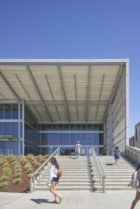
Guided by SOM’s master plan, the newest UC campus doubled in size and met its ambitious sustainability goal ahead of schedule. It is the first public research university in North America to achieve carbon neutrality.
The University of California, Merced is the youngest campus in the UC system and the first North American research university to be established in the 21st century. Its mission is to cultivate a community bound by learning, discovery, and engagement, while also celebrating the heritage of the San Joaquin Valley and playing an important role in the region’s future.
After designing the university’s original master plan in 2002, SOM was selected to lead the 2020 Project — an ambitious public-private partnership that nearly doubles the campus footprint to support the enrollment of 10,000 students by the year 2020. The expansion project of a new campus plan, design guidelines, infrastructure, open space, and 11 new buildings, including state-of-the-art research facilities, laboratories, a greenhouse, and dining hall.
Designed to adapt for different uses and future expansion, the master plan organizes the campus as a compact, walkable environment with dynamic public spaces. The university is the first public research institution in the U.S. to achieve carbon neutrality and the only academic campus to have every building LEED certified, with all 2020 Project buildings earning LEED Platinum certification.
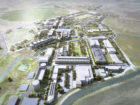
The scale of the Merced 2020 Project, a $1.2 billion investment, is unprecedented. With 11 new university buildings constructed in just four years, it demonstrates how public-private partnerships (P3s) can make it possible for major infrastructure investments to be financed and delivered in record time.
The 2020 Project was delivered through Plenary Properties Merced, with SOM as the campus planner and master plan architect. The project team includes Webcor as design-build contractor, along with WRNS, Page, Mahlum, HOK, Arup, Atelier Ten, Hargreaves Associates, Cliff Lowe Associates, Interface Engineering, and Sherwood Design Engineers.
Selected to design the original campus master plan, completed in 2002, SOM worked with the new institution to define its physical identity. The team designed some of the first buildings and established the guidelines that would inform a common architectural language as the campus grew, with a focus on creating a sense of place authentic to the region.
From the beginning, the goal was defined by environmental performance. UC Merced sought to define the research university for the 21st century, and as such, it set an aggressive agenda to confront the urgent environmental challenges. Stewardship of the environment is embedded into every aspect of the university, starting with its design, construction, and operation. Beyond reducing carbon emissions, the university set the goal of achieving “Triple Net Zero”: to ultimately produce as much power as it uses, create zero landfill waste, and achieve climate neutrality.
Much of the architecture at UC Merced incorporates passive design strategies to reduce energy needs: projecting sun screens, large overhangs, buildings oriented to shield interiors from the sun. Open-air arcades provide shaded places for students to congregate. The use of simple materials and unadorned surfaces, such as poured concrete and corrugated metal, show that sustainable design can be contextual, beautiful, and cost-effective.
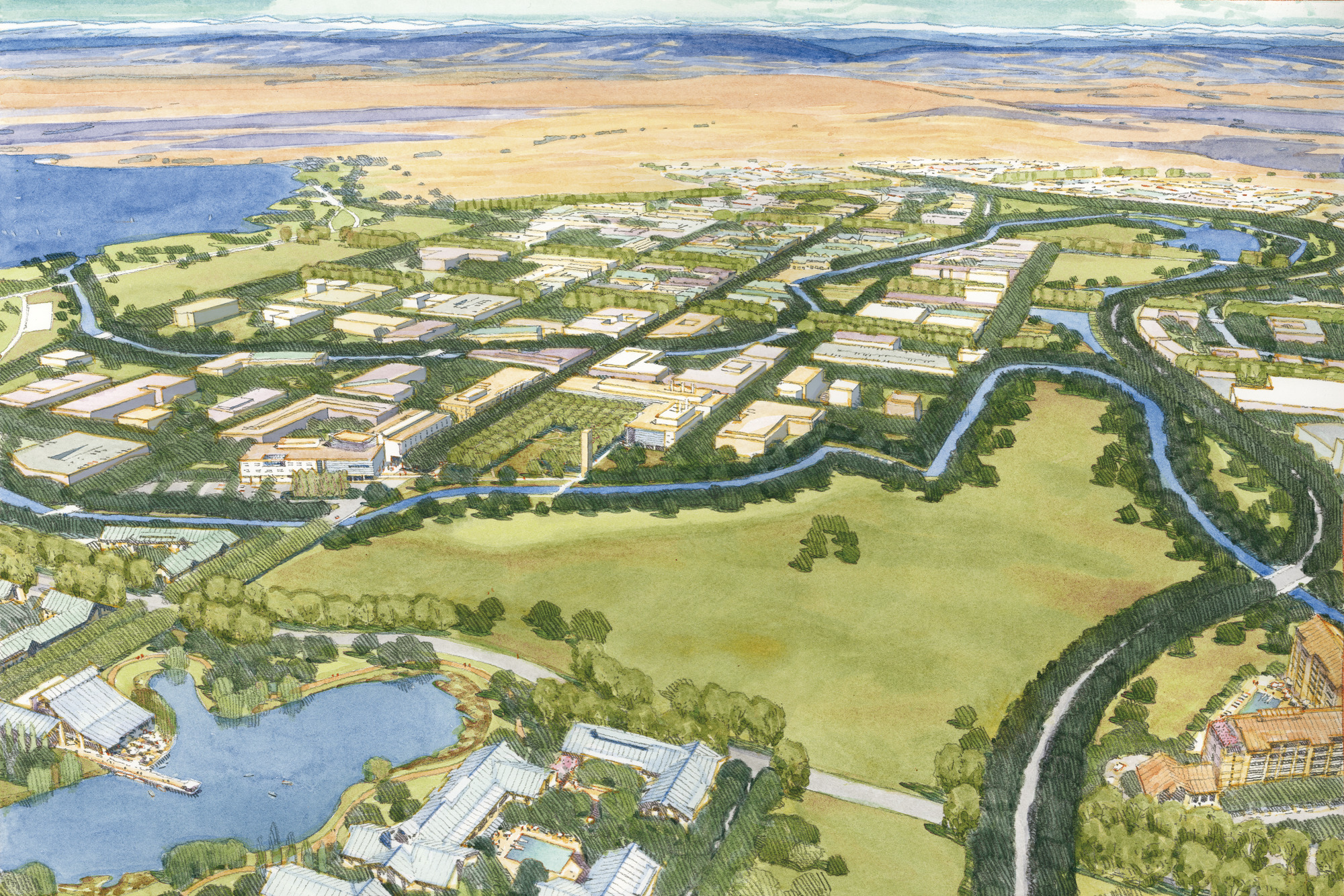

Planning the infrastructure from the ground up, the team spotted a significant opportunity with the Central Plant, which delivers power and water to the campus. It is the backbone of UC Merced’s energy system, with a 2-million-gallon thermal tank system for efficiently storing and chilling water. A facility like this would usually be tucked away, but here the plant is located near the heart of campus, with a perforated metal facade that reveals its inner workings. This allows the plant to serve as a “living laboratory” for environmental science students, and as a highly visible example of the campus’s sustainable infrastructure.
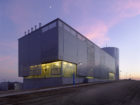
SOM designed the Leo and Dottie Kolligian Library, completed in 2005 as the first academic building on campus, to initially accommodate a variety of functions: academic offices, administration, information technology, classrooms, and student services. As additional buildings were constructed to fill these roles, the library was seamlessly reconfigured, expanding its dedicated areas for study and research.
Designed as the gateway to the University of California Merced campus, the structure is V-shaped, with two wings connected by a taller “core” building that contains an atrium and a reading room. SOM employed several sun-mitigation strategies that reduce heat while maintaining views to the campus and landscape beyond. The building is oriented north-south, with deep-set, shaded facades. Operable garage doors, loggias, and arcades provide an extended “campus living room” and invite students to work and congregate outdoors. In the evening, the building’s louvers reflect light and turn the building into a glowing lantern.
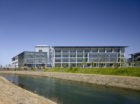
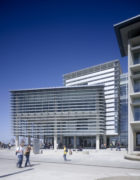
SOM’s planning work for UC Merced’s 2020 campus expansion project builds on the principles of sustainability and flexibility established in the first master plan. Clusters of four- and five-story buildings create an “urban street experience” at the heart of campus, yet grounded in a sense of place unique to the Valley, with views out to the landscape beyond. Buildings are clustered into zones of higher density, while natural areas, such as a wetlands zone near the campus, remain open and protected from development.
Another distinctive aspect of the campus planning strategy is that each of the new buildings at UC Merced serves multiple purposes. Classrooms are layered into every building, from residence halls to research facilities.
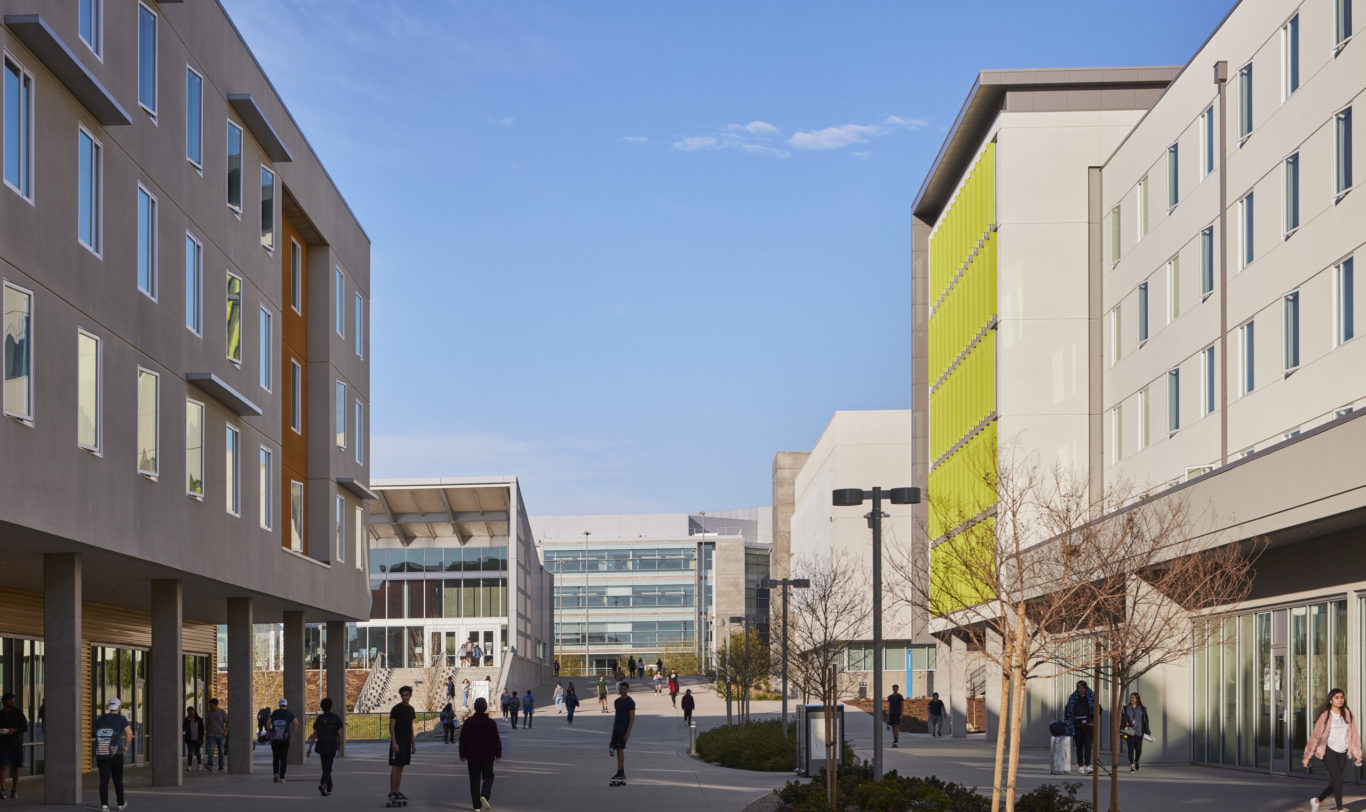
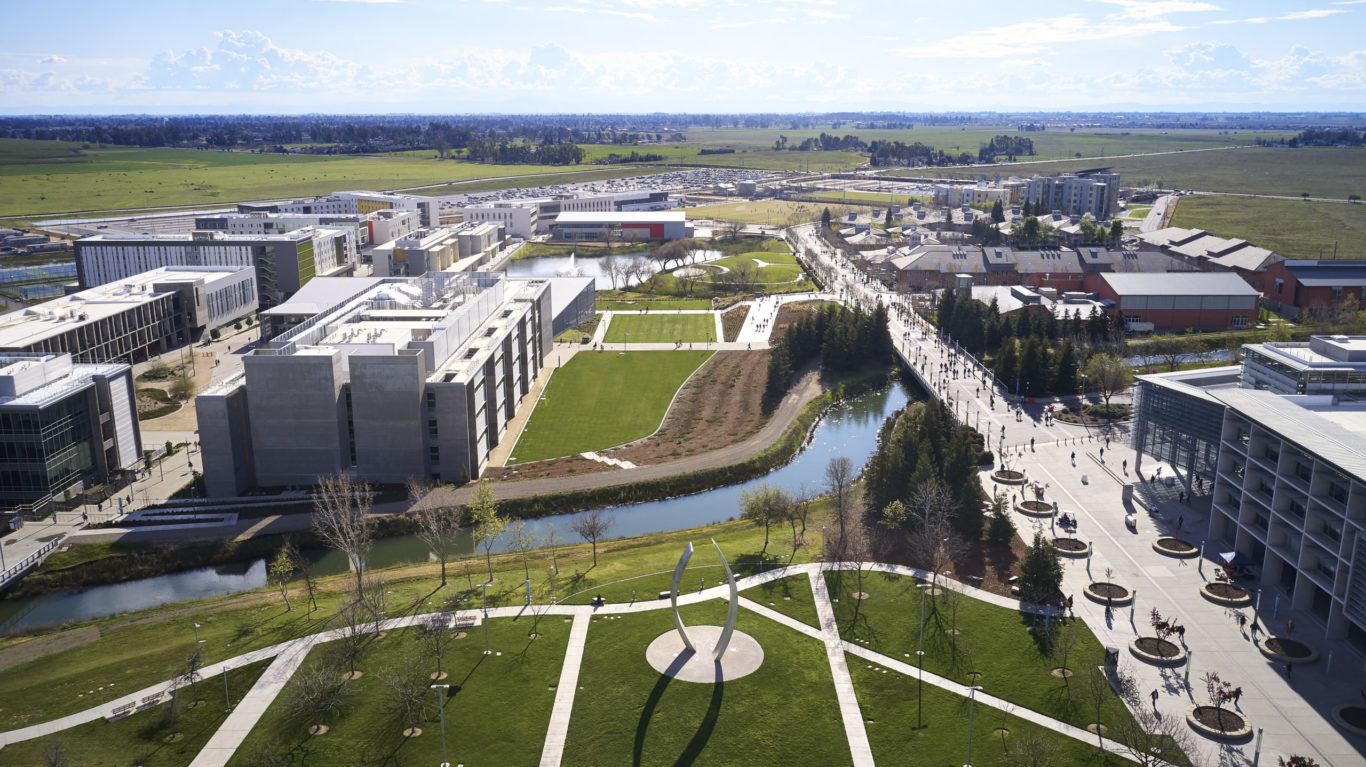
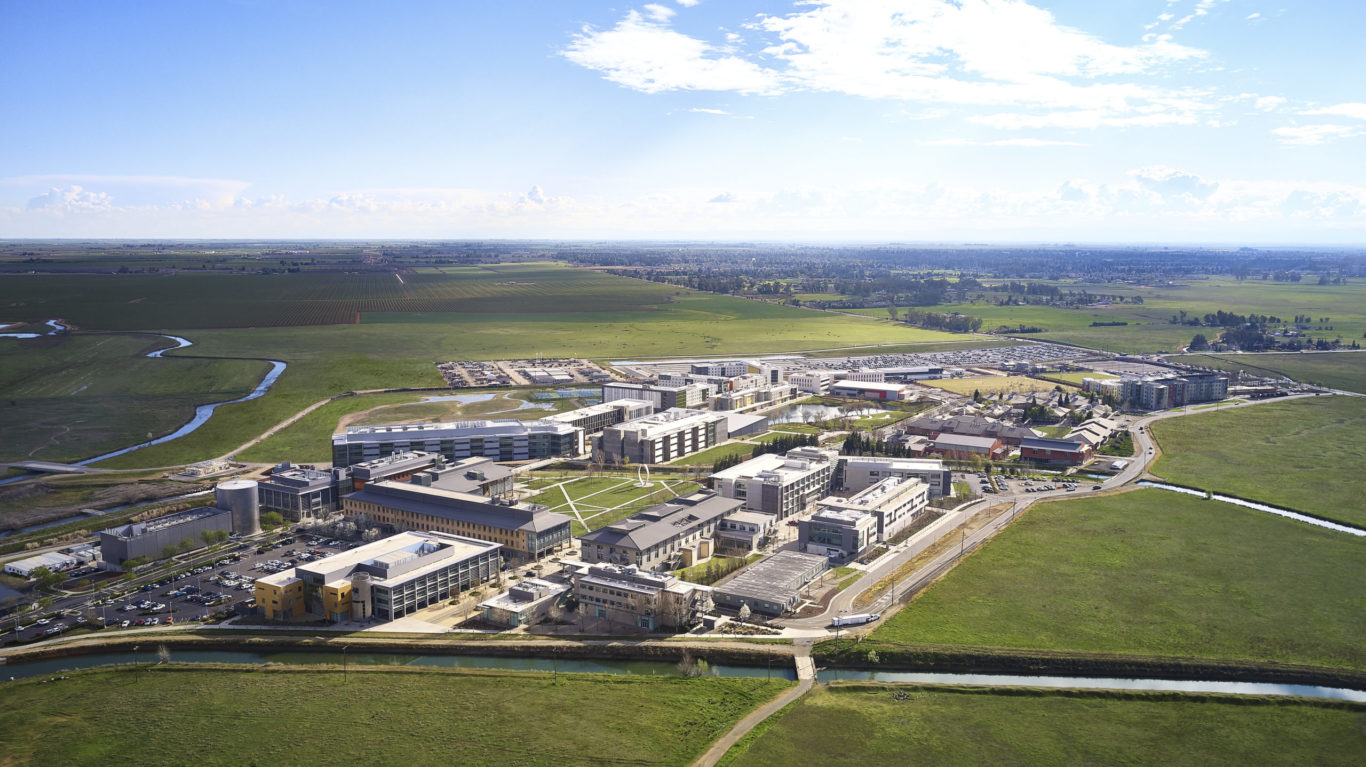
A new dining hall, completed as part of the 2020 Project, has become a popular gathering place on campus. With its open plan, circulation strategies, and transparent character, the Pavilion provides a socially focused culinary environment.
Inspired by the Central Valley’s vernacular agricultural buildings, the Pavilion connects the past with present, utilizing simple, modern materials and expressed structure to create an expansive and engaging indoor-outdoor dining experience. The open, light-filled interiors are designed for the evolving needs of the campus, with flexible seating that transforms over the course of a day — from community dining to lectures, dances, and concerts.
The building is inspired by the form of simple, durable agricultural sheds found throughout the Central Valley. Its roof collects rainwater, allowing for increased water conservation through stormwater harvesting in response to the region’s hot, arid summers and mild, rainy winters. The high-efficiency, low-waste building is certified LEED Platinum.



The Sustainability Research and Engineering Building is where students and faculty are advancing UC Merced’s climate-focused mission. With classrooms next to research labs on every floor, the layout creates the possibility for serendipitous discoveries.
Open office areas and circulation located at the building perimeter maximize daylight and sweeping natural views through to the laboratory blocks at the interior of the building. Areas for meeting, informal gathering, and circulation promote interaction between students, researchers, and departments, fostering community within a forward-looking learning environment
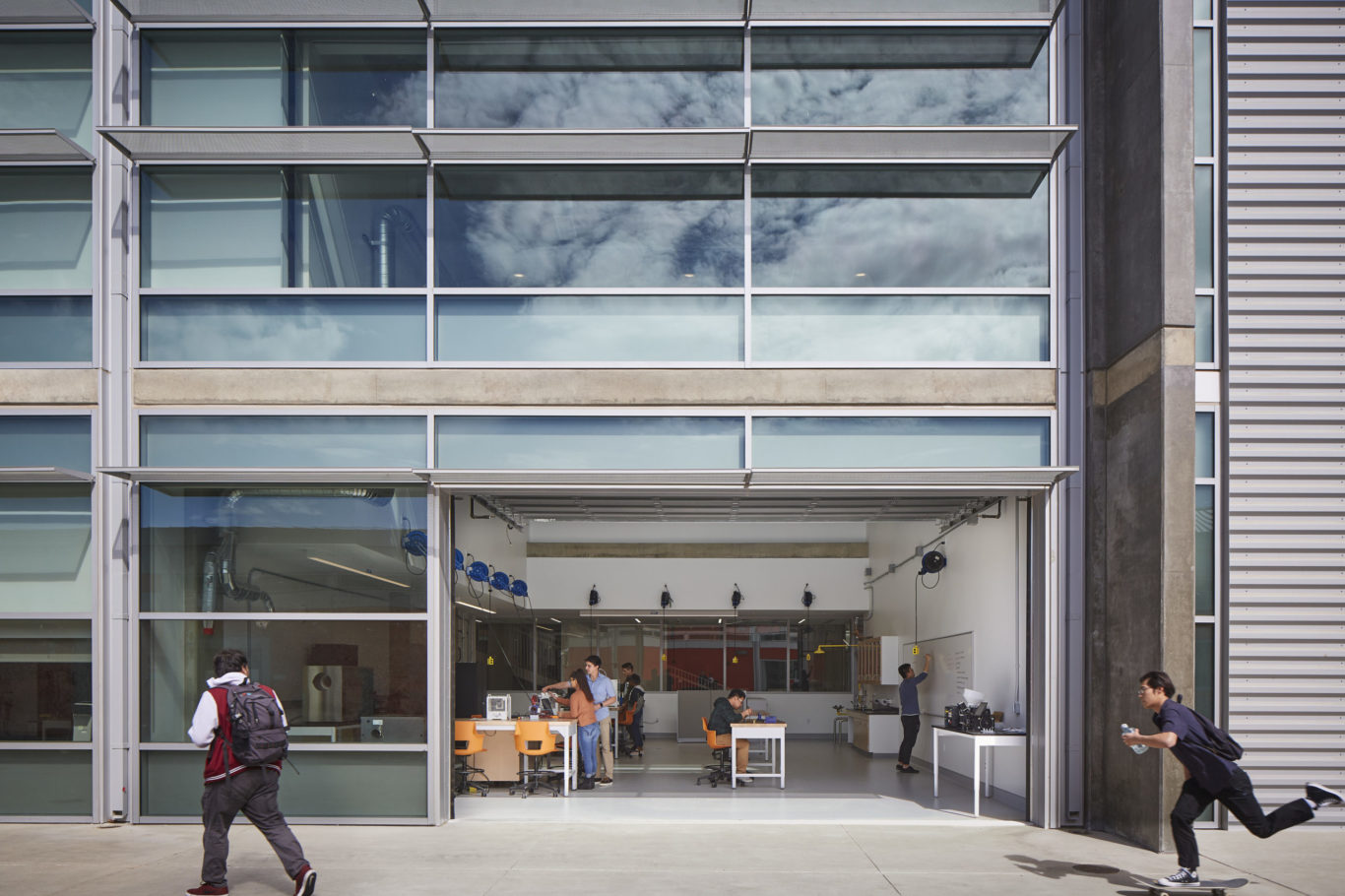
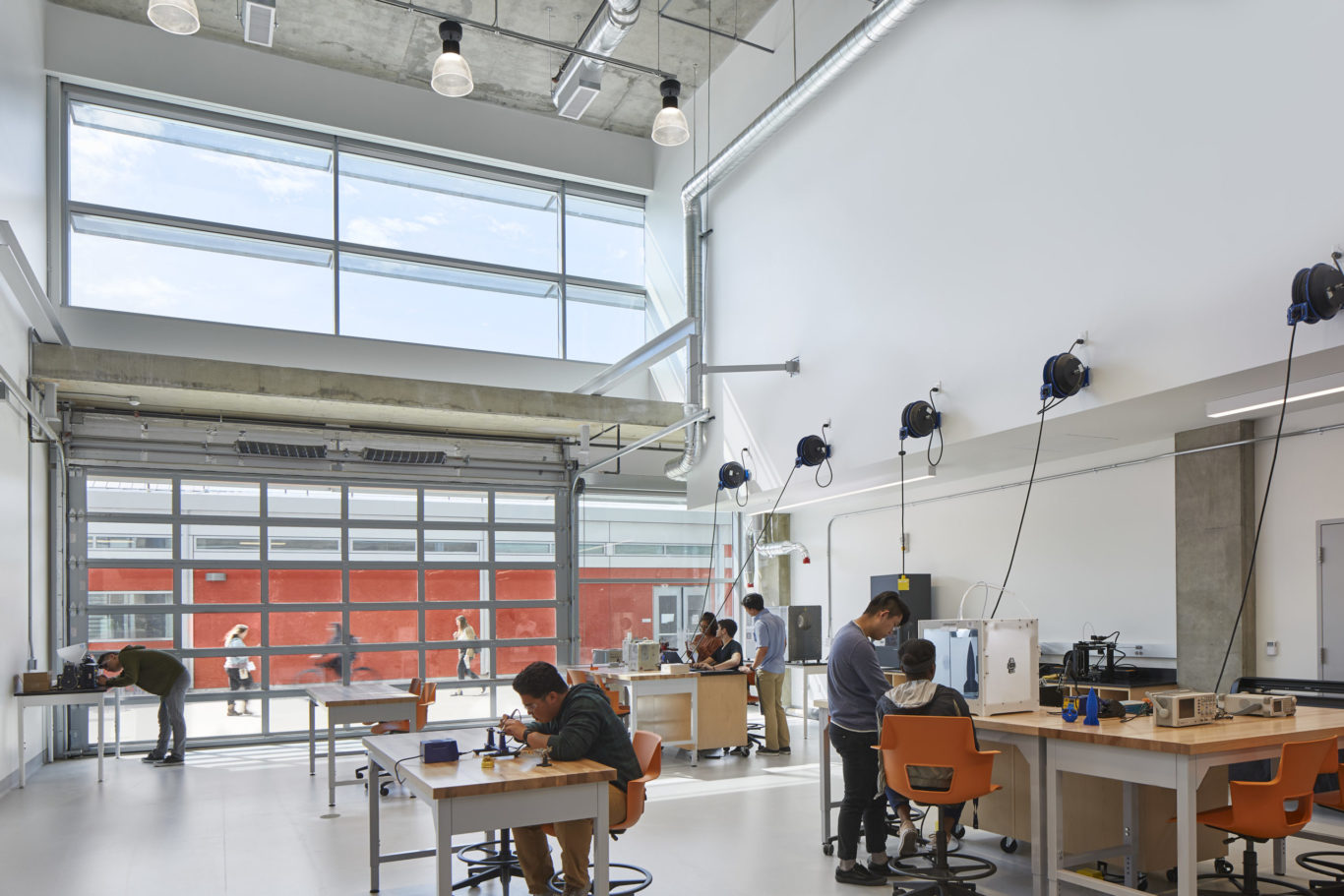
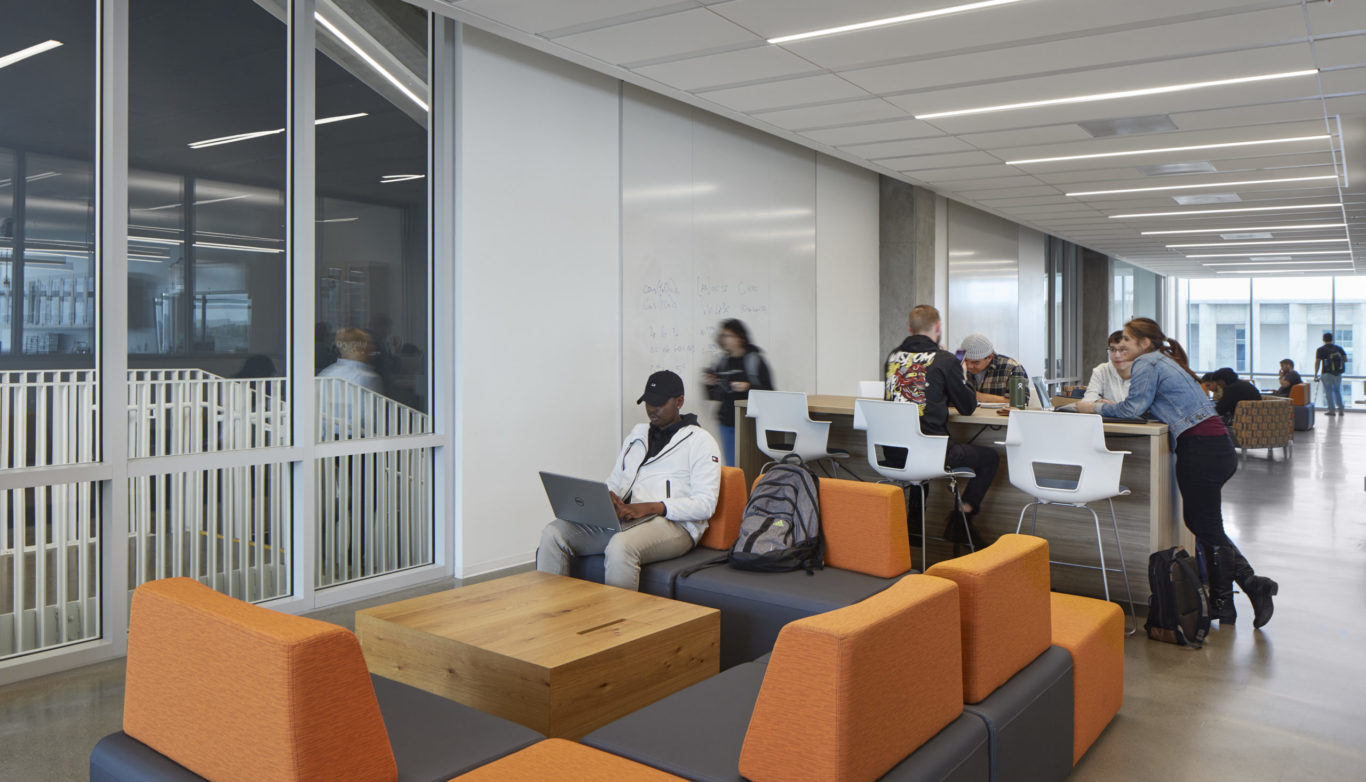
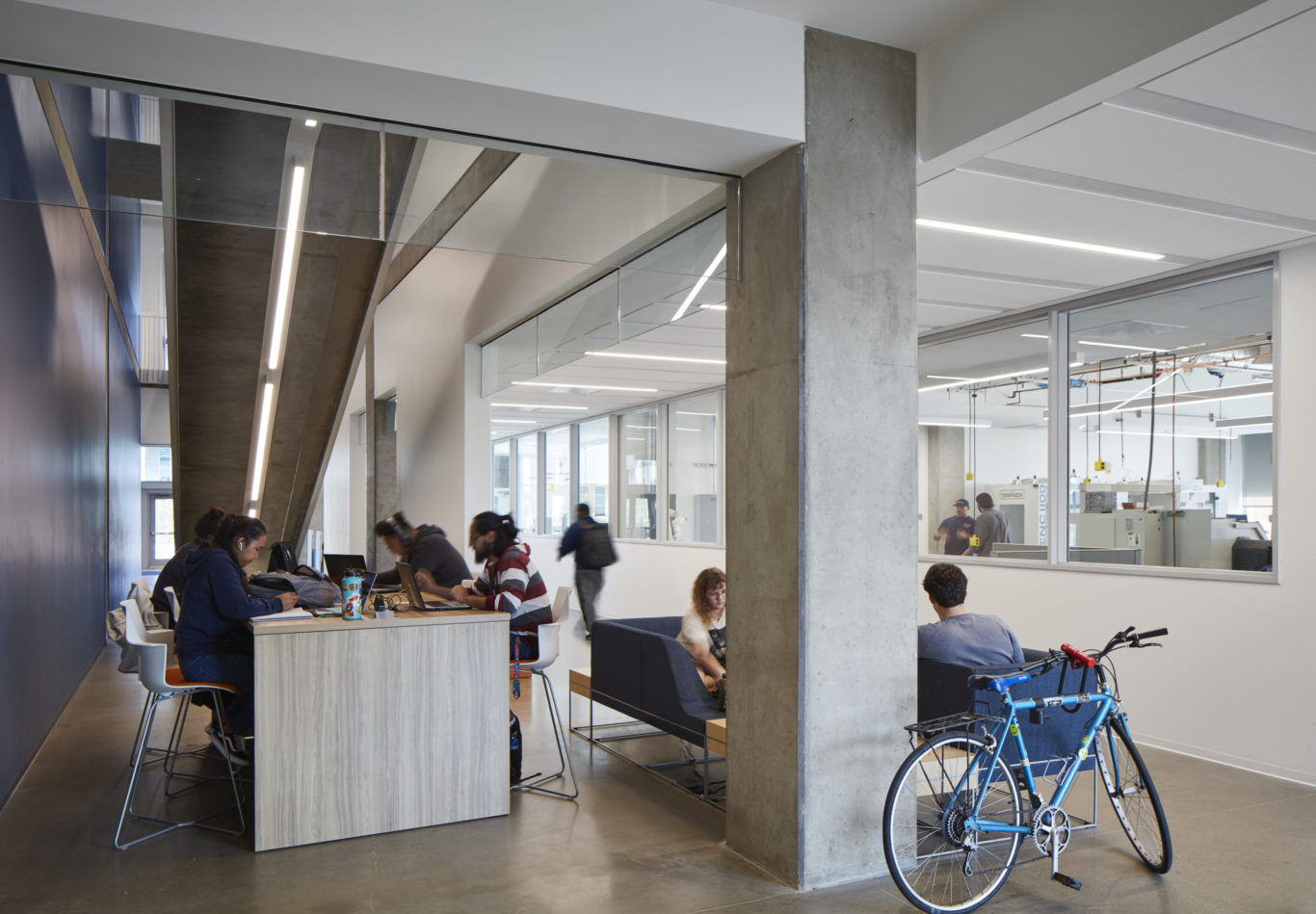
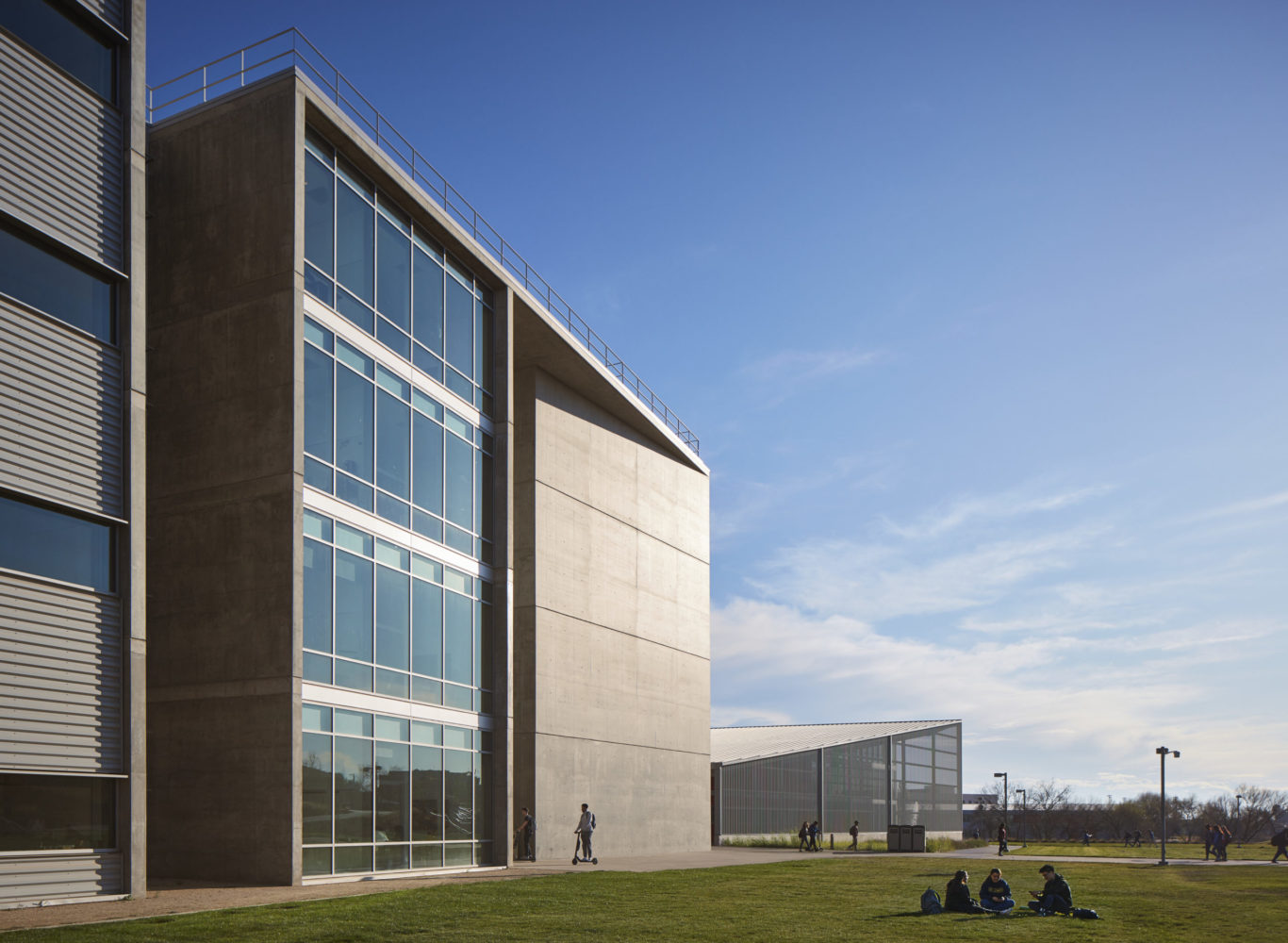
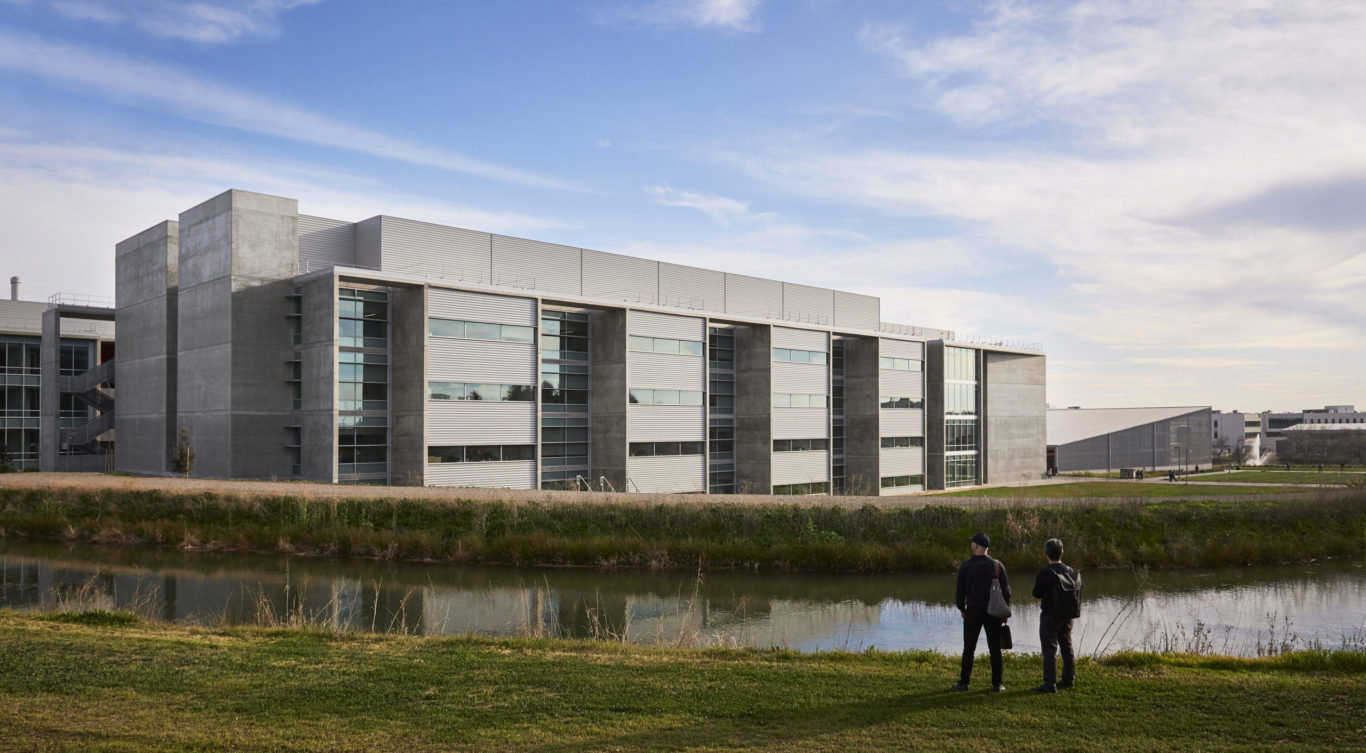
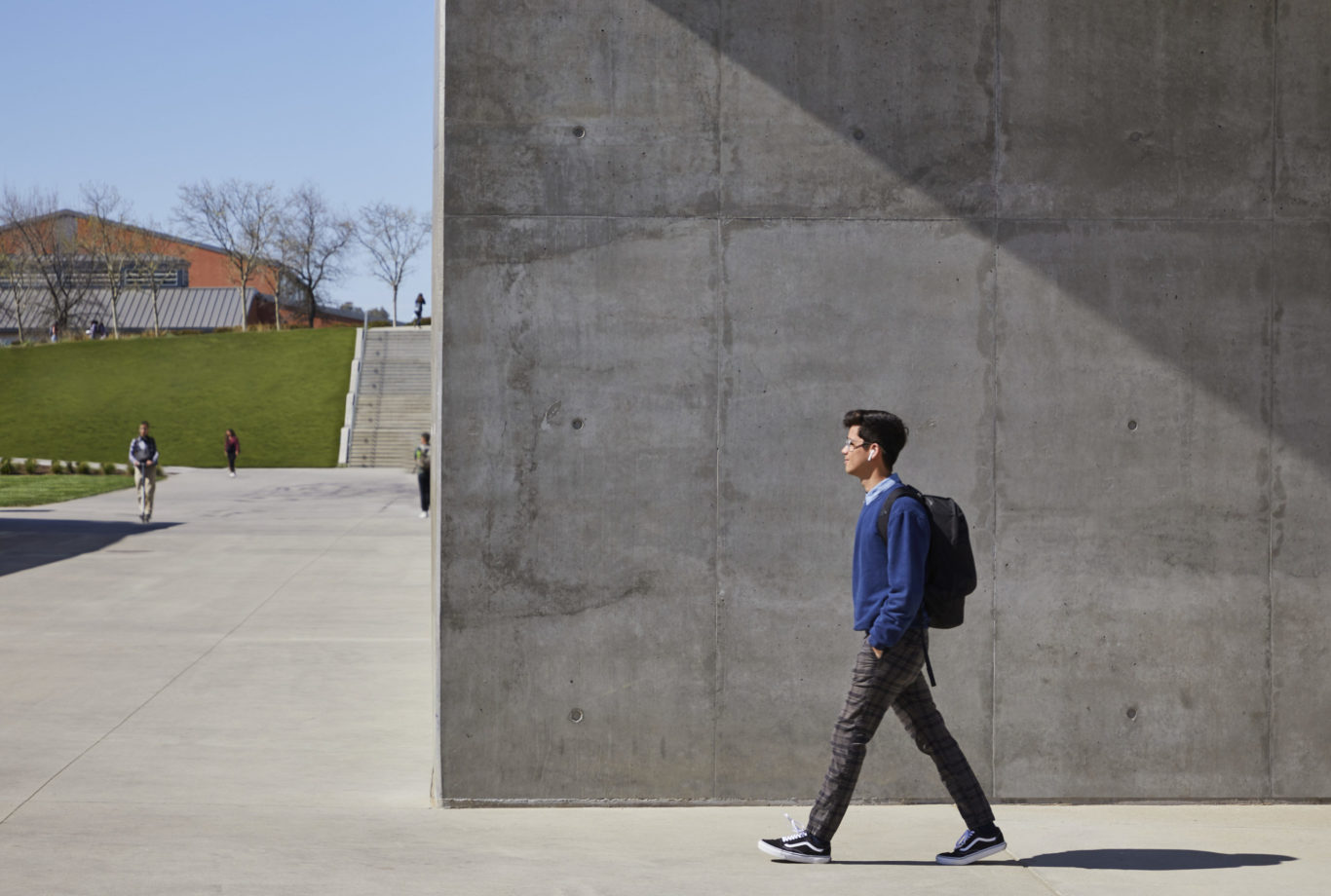
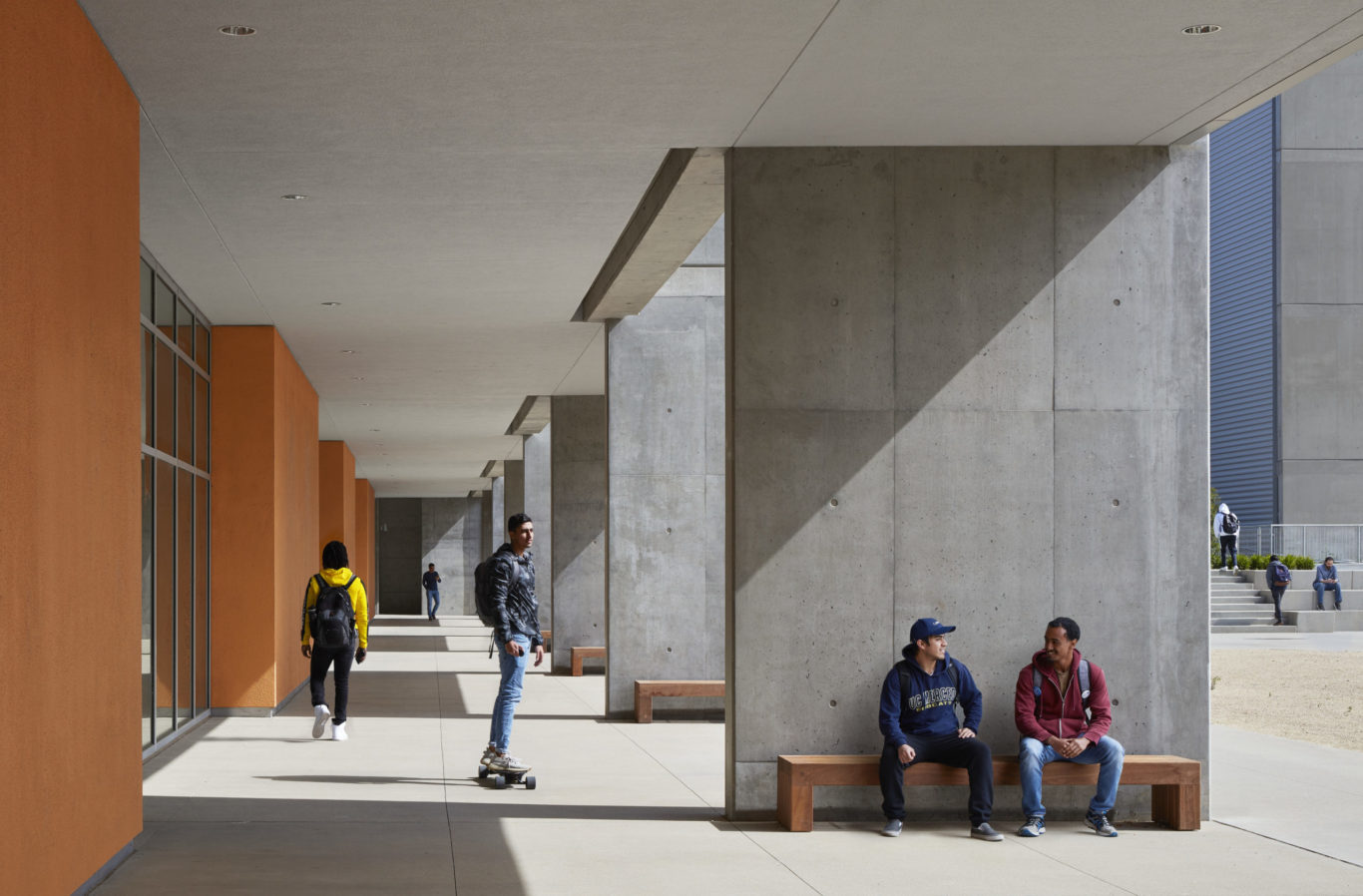
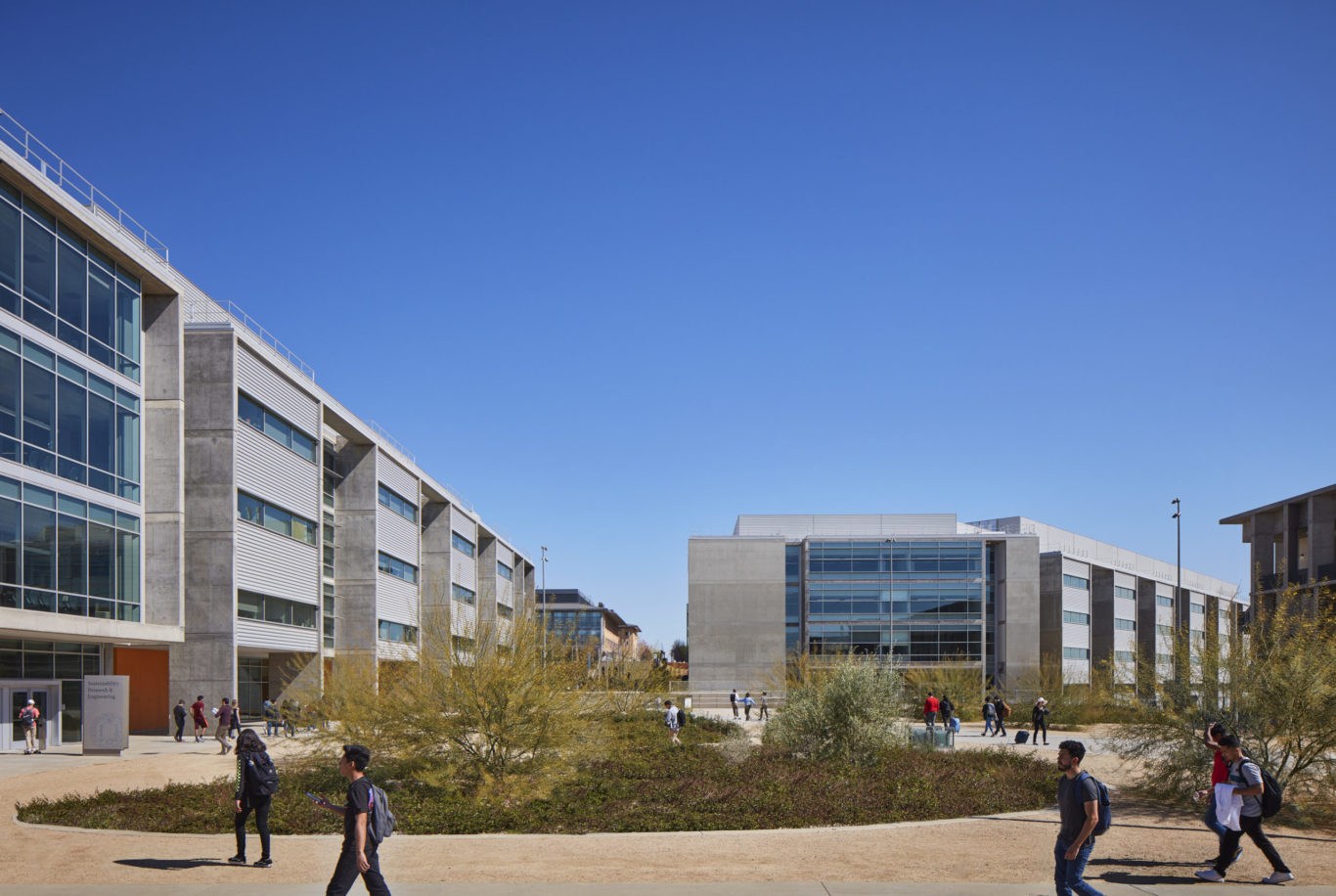
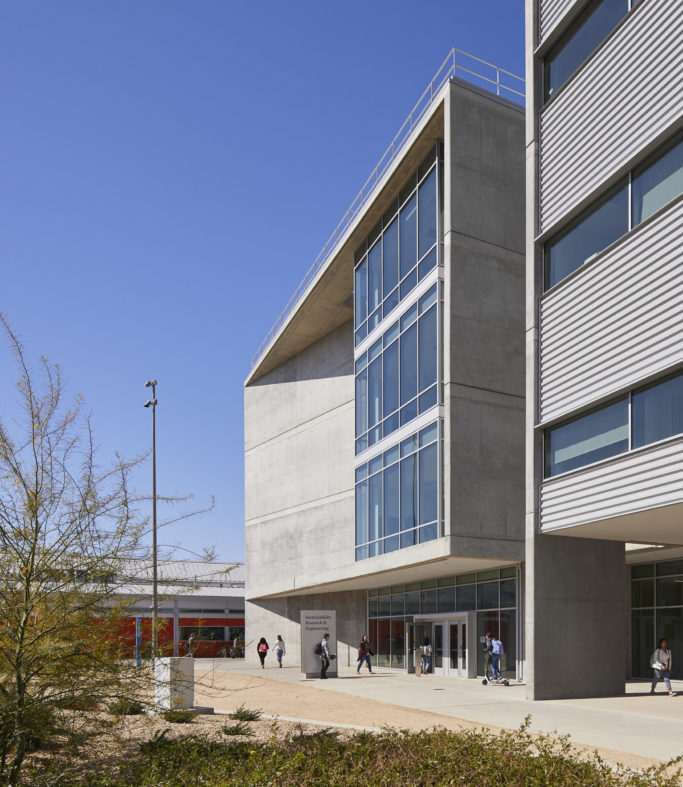
To maximize flexibility, both wet and dry laboratories are organized into modules and set within a standard structural grid, which enables them to be customized and reconfigured over time for an evolving curriculum. A central chemical storage and distribution facility, designed to support science buildings campus-wide, is located in the basement of the building adjacent to the loading dock.
A south-facing arcade along the length of the quad creates a protected circulation path and a shaded gathering area directly outside the ground floor classrooms. Within the arcade, a pedestrian-permeable glass wall encourages passage between classrooms, collaboration spaces, and the quad, seamlessly connecting interior and exterior gathering spaces for students and staff.
Using strategic roof overhangs and wall extensions to reduce solar heat gain, along with efficient lighting and mechanical systems, the LEED Platinum-certified building is designed to support the university’s triple net zero goal.

Chapel Hill, North Carolina, United States
San Francisco, California, United States
Houston, Texas, United States
01/